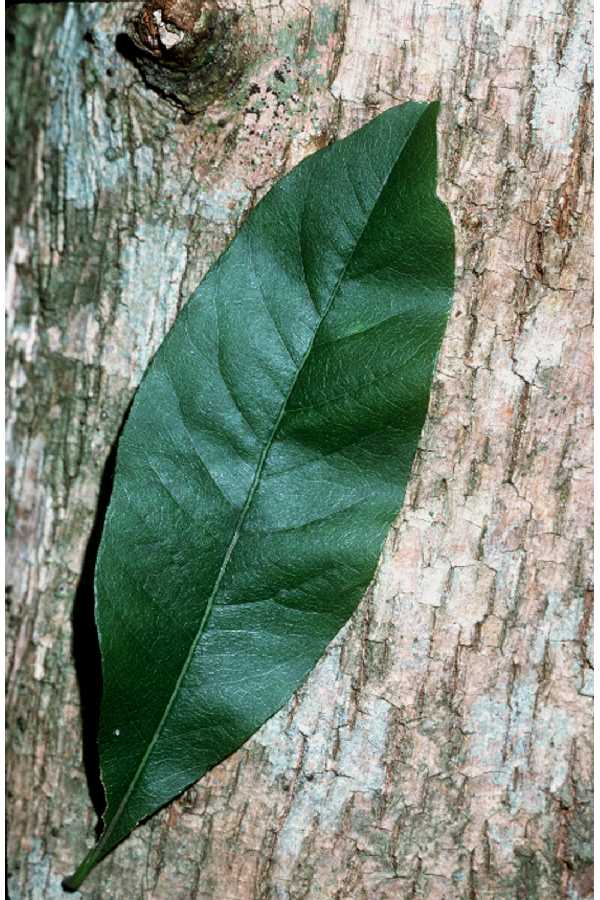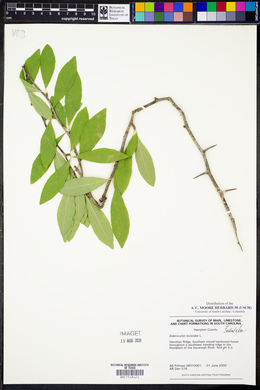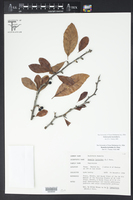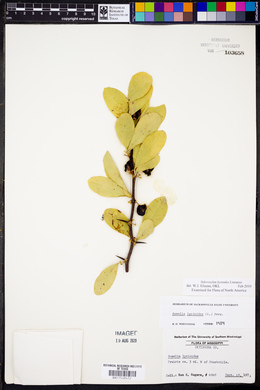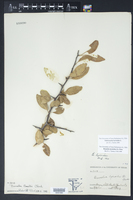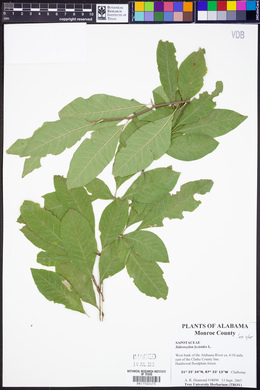Sideroxylon lycioides
|
|
|
|
Family: Sapotaceae
Buckthorn Bully
[Bumelia lycioides (L.) Pers., moreBumelia lycioides var. ellipsoidalis R.B. Clark, Bumelia lycioides var. virginiana Fernald, Sideroxylon laeve Walter] |
Shrubs or trees, to 14 m. Stems not armed or armed, glabrous. Leaves deciduous; petiole 3-14 mm, glabrous; blade (dull to lustrous dark green adaxially), elliptic to ovate or oblanceolate, 30-122 × 13-50 mm, base acute to attenuate, margins plane, apex usually acute to acuminate, sometimes rounded, surfaces glabrous or sometimes glabrate abaxially, venation visible, midrib villous (hairs white), slightly raised, marginal vein absent. Inflorescences 7-40-flowered. Pedicels 2-10 mm, glabrous. Flowers: calyx 1.3-3.1 mm diam., sepals 5(-6), 1.6-2.4 × 0.8-1.9 mm, glabrous; petals 5(-6), white, median segment elliptic to ovate, 1.8-2 mm, lateral segments falcate, 1.1-1.7 mm; stamens 5(-6), 2.7-2.9 mm; staminodes lanceolate, 1.5-2 mm, entire; anthers sagittate-lanceolate, 1.3-1.5 mm; pistil (4-)5(-6)-carpellate; ovary (4-)5(-6)-locular, 1-1.2 mm, glabrous or pilose to hirsute; style 1.2-1.3 mm. Berries purplish black, ellipsoid to subglobose, 9-16 mm, glabrous or glabrate. Seeds 6.5-9 mm. Flowering Jun-Aug. Upland, moist and floodplain forests, edges of swamps, hammocks; 10-1500 m; Ala., Ark., Del., Fla., Ga., Ill., Ind., Ky., La., Miss., Mo., N.C., S.C., Tenn., Tex., Va. Sideroxylon lycioides is characterized generally by elliptic leaves and glabrous twigs and leaves. Varieties and segregate species have been recognized based on variation in leaf size and shape, leaf apex, and fruit size and shape. As observed by A. Cronquist (1945c), most of these characters exhibit continuous variation among collections throughout the range of S. lycioides. Because of this pattern of variation without marked morphological gaps, we recognize no infraspecific variants. T. D. Pennington (1990) proposed that S. lanuginosum, S. lycioides, S. reclinatum, and S. tenax are closely related and that this complex of species is morphologically distinct from neotropical species of Sideroxylon.
Shrub or small tree to 10 m; lvs elliptic to elliptic- oblanceolate, 4-13 נ1-4.5 cm, reticulate-veiny, silvery-strigulose beneath when young, soon glabrate; fls 10-60 in a cluster, the pedicels 4-10 mm, glabrous or nearly so; cor 3-4 mm, the tube shorter than or equaling the lobes; fr ellipsoid to obovoid or subglobose, 7-13 mm; seeds 6-9 mm. Low woods, thickets, and river-banks; Fla. to e. Tex., n. to s. Va., s. Ind., and s. Mo. June-July. Gleason, Henry A. & Cronquist, Arthur J. 1991. Manual of vascular plants of northeastern United States and adjacent Canada. lxxv + 910 pp. ©The New York Botanical Garden. All rights reserved. Used by permission. From Flora of Indiana (1940) by Charles C. Deam Our only station for this shrub or small tree is the talus slope of the sandstone cliffs of the Ohio River about 3 miles above Cannelton, Perry County. When I found it in 1912 there was one specimen about 10 feet high and several other specimens of lesser height. The area has been pastured and in 1929, there were only two small specimens surviving. …… Indiana Coefficient of Conservatism: C = 10 Wetland Indicator Status: FACW |

